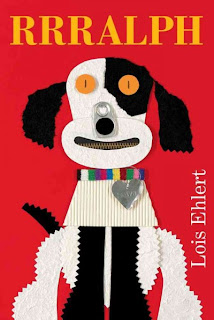Summary:
We looked at some different types of illustration in children's books like found objects in RRRalph by Lois Ehlert, different textures and metaphorical media in Seven Blind Mice by Ed Young, and some different perspectives and contexts in Zoom by Istvan Banyai.
We talked about four concepts in art making... MEDIA/MEDIUM, PROCESS, GROUND, and SUPPORT. We went on a scavenger hunt to find different ways to make a mark with different objects.
Media:
lipgloss, fork, makeup, bubbles, eraser dust, shoe, gum, yellow leaf berry, gum, rip, stapler, marker dust, tomato sauce, coin mark, fingerprint, tire, money, orange peel, push pin, teeth, dirt, windex
Processes:
kiss, stab, rub, submerge, dust it, chew up gum and spit it, splatter, squash, tear, staple/puncture, scratch, bite
Grounds:
paper, plastic wrap, plate, window, gesso, canvas, foil, fabric, face, cement,
Support:
podium, wall, building, table, chair, stool, stand, brick, easel, window pane, ground
An interesting question is posed by the work of Kumi Yamashita: Can light or shadows act as a medium? After looking at her word, my immediate answer was YES! I was so impressed by these shadows!
Something that stuck out to me was when Dr. Barney told us that the color wheel is only one way for us to access truth about color! We talked about the primary colors red, yellow, and blue and compared them to other color systems like CMYK, Lab Color, Index Color, and RGB.
The discussion on Formalism is what really hit home for me. This kind of art that evokes emotion through color, shape, size really resonated with me. When I was creating a prototype for my Instrumentalist Presentation, I ended up using a lot of these ideas to guide me as I put together found object art.
Extension:
These formalist principles can be applied to evoking emotion in art (Expressionism) as well as to teaching lessons or morals through art (Instrumentalist). In a classroom I would certainly want to show PDF Presentation called "Picture This" where Molly Bang talks about the decisions that guide art. I love thinking of a process as series of decisions because it means that our art is meaningful, though out, and deliberate.
Application:
As I mentioned previously, I used these same principles in a found object art prototype that I created. In my classroom, I want to teach different media, grounds, supports, and artistic decisions through a found object art assignment. My students would have to follow these guidelines that would be creative restraints to enhance the creativity rather than to stifle it.
1. As a class we will go on a nature walk. Choose 11 found objects of any kind. You must have at least 3 different objects in differing quantities that add up to 11.
2. You can decide what objects to use, how to arrange them, and how to present them (glue it, photograph it, tape it, etc.) based on what kind of emotion that you want to convey.
3. Your art decisions must be geared toward evoking a certain emotion or teaching a lesson or a moral.
This is an example of a found object piece that I created. I have annotated each item to explain the artistic decisions I made about shape, size, color etc. Lastly, because I created a piece that was supposed to represent childhood, I chose to photograph the image rather than gluing it down to imitate the impermanence of childhood.






No comments:
Post a Comment